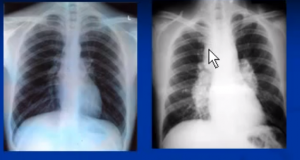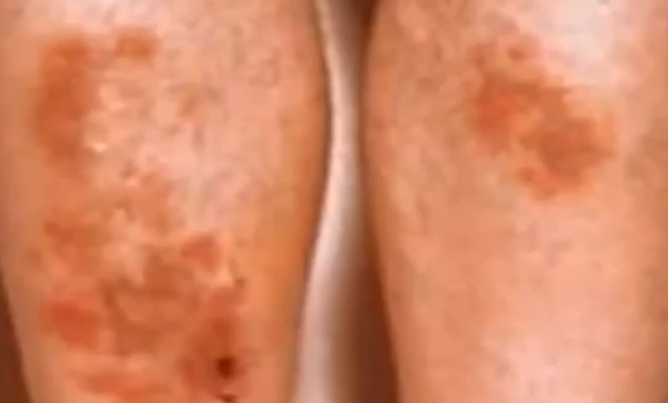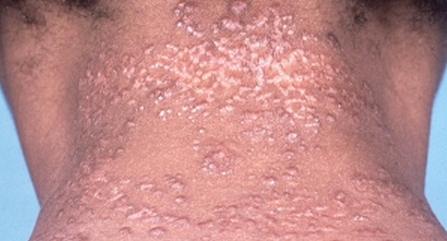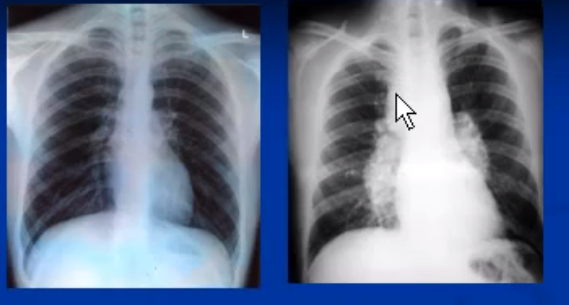Sarcoidosis is a condition, which causes growth of tiny clumps of cells known as granulomas in areas of the body like the lungs and skin. The growth of these tiny clumps of inflammatory cells occurs mainly in organs like skin, and lungs but the condition can affect other areas such as the eyes and lymph nodes. It is believed that sarcoidosis occurs due to immune reaction from an unknown substance, which may be inhaled from air. The condition has no cure but its symptoms can be managed with treatment. The condition eventually goes away on its own.
Causes of sarcoidosis
Doctors do not know what exactly causes sarcoidosis but some people have shown a genetic predisposition in suffering from the condition. Sarcoidosis may be induced by exposing the body to substances like dust and chemicals and microbes such as viruses and bacteria. Research is being carried out to help determine which genes in cells may be responsible in triggering this condition.
Although the immune system is set to protect the body from harmful substances and foreign bodies, at times, the immune cells can collect and form inflammatory cells known as granulomas as they respond to some substances. When granulomas develop in an organ, they could affect its function. The inflammatory process in immune response signals that the body is fighting foreign substances.
When the immune system senses that there is a foreign matter in blood, it sets white blood cells to destroy the foreign materials like germs. This leads to inflammation or swelling and redness of the tissue around the area where there are foreign substances. The immunity response stops when the substance is cleared or damaged. However, in sarcoidosis condition, it is thought that the immune system goes into overdrive and begins to attack its own tissues and organs.
The immune system sends white blood cells to the organs and they collect there and form granulomas. There are many different disorders, which arise from self-attack by the immune system such as rheumatoid arthritis and lupus. Although this condition can affect more than one family member, there is no supporting fact, which demonstrates that sarcoidosis is inherited or passed from parents to children.
Sarcoidosis is not infectious. There are risks factors associated with this condition and they include age, sex, race, and family history. Though the condition can affect people of any age, in most cases, it begins at the age of around 20 to 40. Women are also slightly likely to suffer from the condition when compared to men. A family history of this condition shows that a person may have more chances of suffering the same. Sarcoidosis affects more African-Americans than white Americans.
Symptoms of sarcoidosis
Symptoms and signs of this condition vary depending on the areas or organs, which are affected. The symptoms may develop slowly and for many years while at other times, symptoms may occur sudden as disappear abruptly. In most of the patients, symptoms of sarcoidosis may not show and could be discovered through chest X-rays that are done for other medical examinations.
When the lungs are affected, symptoms include persistent dry cough, shortness of breath, chest pain, and wheezing sound. Symptoms on the skin include rashes, nodules, lesions and change in colour. The rash may have red or reddish-purple bumps and affects areas like the ankles with a warm feeling and tenderness. Lesions may occur due to disfiguring skin sores in areas like the cheeks, nose and ears. The colour of the skin may become lighter or darker than normal. Nodules may develop in areas around scars or tattoos.
When eyes are affected, a person may have blurred vision, sensitivity to light, severe redness and pain in the eyes. There are also generalized symptoms where a person feels fatigued, has fever and develops swollen lymph nodes on the neck, face, groin or armpits. Weight loss may also be experienced in a patient with this condition. Hearing loss, stuffy nose, pain in bones, and abnormal heart rhythm are other symptoms, which may be experienced by a patient.
Sarcoidosis Treatment
This disease often goes way after sometime and it may not require treatment. However, it can last for years and the symptoms may be severe necessitating the need for medication and other treatment options. Lifestyle changes and use of over the counter pain relievers like paracetamol may help controlling the flare-ups.
When the inflammation is severe, the doctor may recommend medication like prednisolone steroid tablets. These drugs will help keep the inflammation down. Nonetheless, this drug can have adverse side effects like mood swings, weight gain, and thinning of bones and skin when used for a long time. Other medications used in treatment of autoimmune diseases including rheumatoid arthritis may be administered to manage the inflammation caused by sarcoidosis.
Such drugs include tumor necrosis factor-alpha inhibitors. Corticosteroids may be used to treat inflammation by being inhaled or applying directly on skin. Surgery may be recommended when sarcoidosis causes severe damage on organs such as the lungs and liver. An organ transplant may thus be performed by surgeons. In essence, there is no cure for sarcoidosis and treatment may not be necessary. However, if the symptoms persist and are severe, then medications are applied to manage them.
Sarcoidosis Pictures






